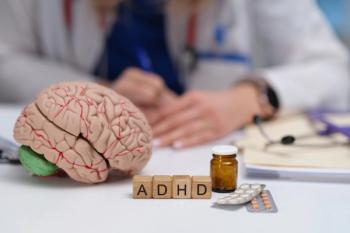
- Consultant for Pediatricians Vol 7 No 2
- Volume 7
- Issue 2
Temper Tantrums: Cause for Concern--or Normal Behavior?
Parents often come to the pediatrician with concerns about their preschooler's temper tantrums. Should we reassure them that tantrums are normal, or should we refer the child for further evaluation? What clues suggest that tantrums might be a sign of future problems?
What clues suggest the need for referral?
Parents often come to the pediatrician with concerns about their preschooler's temper tantrums. Should we reassure them that tantrums are normal, or should we refer the child for further evaluation? What clues suggest that tantrums might be a sign of future problems?
Belden and colleagues1 set out to address these questions in a study recently published in The Journal of Pediatrics. The authors recruited children aged 3 to 5.11 years from physicians' offices, preschools, and day-care centers in the St Louis area for a study on preschool depression. Data were analyzed from 279 subjects, including healthy children as well as those identified by a validated screening tool to have signs of depression, disruptive disorder, or both. Children with delays in language or cognition, pervasive developmental disorder, chronic medical problems, and neurological disorders were excluded.
Subjects were divided into a healthy group, a depressive group, a disruptive group, and a depressive- disruptive group. Diagnostic and Statistical Manual of Mental Disorders, Fourth Edition (DSM-IV) criteria were used to group the children based on symptoms reported by parents. The healthy children did not meet the criteria for any psychiatric disorder. The depressive group was made up of children who met the criteria for major depressive disorder without a comorbid disruptive diagnosis. The disruptive group included children who met criteria for attention-deficit hyperactivity disorder, conduct disorder, or oppositional defiant disorder without a comorbid depressive diagnosis. The depressive-disruptive group met criteria for both major depressive disorder and a disruptive disorder.
Using the Preschool Age Psychiatric Assessment tool, the authors obtained information from primary caregivers about temper tantrum characteristics such as frequency, intensity, and specific behavioral components. This information was not used to determine whether the child met DSM-IV criteria for a depressive or disruptive disorder. Tantrums were then classified into 3 groups based on the caregivers' responses: normative, excessive without aggression, and excessive with aggression.
Children who did not meet DSM-IV criteria for psychiatric disorders had fewer destructive, violent, self-injurious, and orally aggressive behaviors during their tantrums than did children who met depressive and/or disruptive criteria. The healthy children also had shorter and less intense tantrums with quicker recovery times. The depressive children were more likely to participate in self-injurious behavior, and the disruptive children more likely to engage in aggressive behavior. Belden and colleagues1 determined that those at risk for a problem included children who:
•Were unable to calm themselves after a tantrum.
•Had frequent tantrums.
•Exhibited any self-injurious behavior.
•Showed consistent aggression (toward people or objects).
•Had tantrums that lasted last more than 25 minutes.
The authors note that their study is limited by the caregiver report as the single source of data for both the tantrum characteristics and the DSM-IV criteria. The conclusions could be strengthened if in a future study, data on each child's behavior were compiled from several different sources or by an objective observer. In the meantime, however, the Belden study can help guide pediatricians when counseling parents on signs of concerning tantrums.
The bottom line: if we see children with tantrums that are frequent, aggressive, self-injurious, prolonged, or not self-limited, we need to consider referring for further evaluation rather than only reassuring parents. *
References:
REFERENCE:
1.
Belden AC, Thomas NR, Luby JL. Temper tantrums in healthy versus depressed and disruptive preschoolers: defining tantrum behaviors associated with clinical problems.
J Pediatr.
2008;152:117-122.
Articles in this issue
almost 18 years ago
Neonate With Down Syndromealmost 18 years ago
Bell Palsy in Lyme Disease: More Than Meets the Eyealmost 18 years ago
Histiocytosis X and Lichen Sclerosus et Atrophicusalmost 18 years ago
Juvenile Laryngeal Papillomatosis: An Unexpected Cause of Stridoralmost 18 years ago
Pityriasis Rosea in a Young Boyalmost 18 years ago
Pelvic Bruising in a Young Girlover 18 years ago
Secondary Syphilis in a Teenage Boyover 18 years ago
Cutis Marmorata in an Infant BoyNewsletter
Access practical, evidence-based guidance to support better care for our youngest patients. Join our email list for the latest clinical updates.








